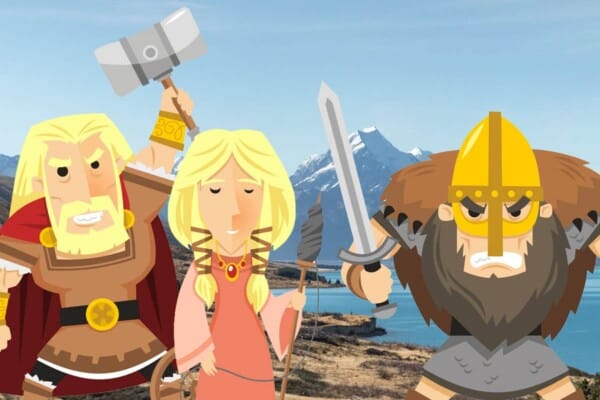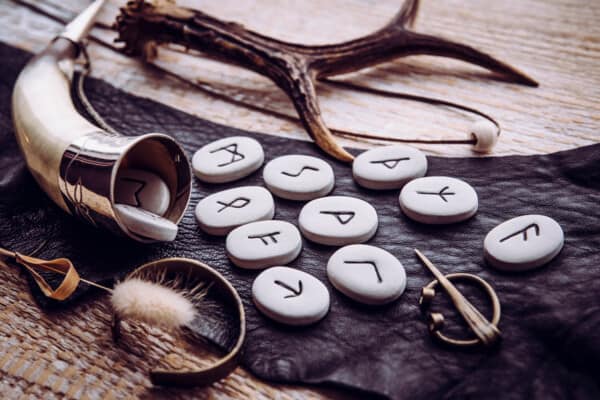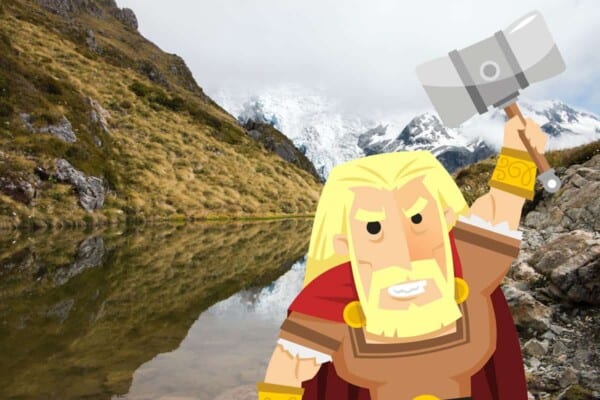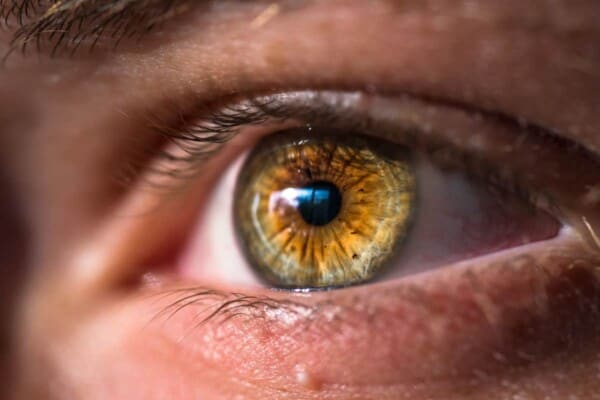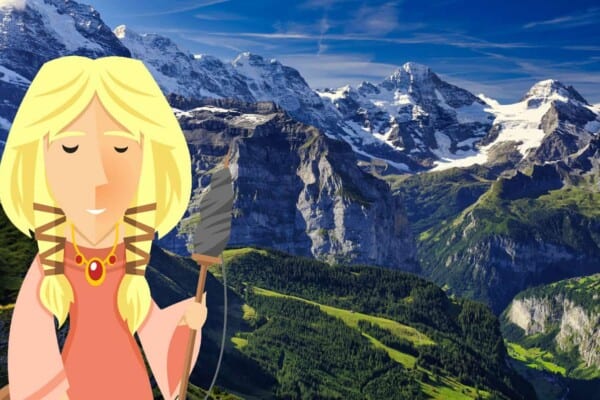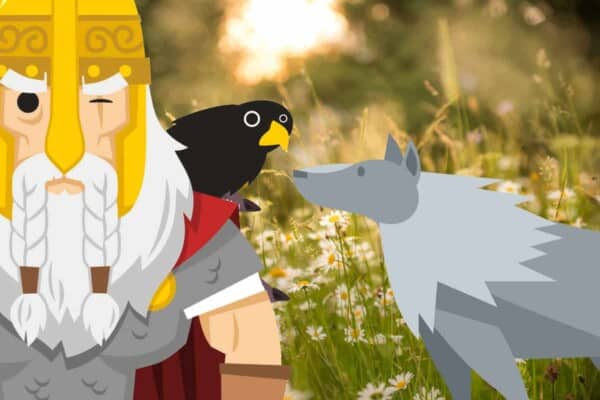Odin, from the Old Norse Óðinn, was the leader of the Æsir, the primary pantheon of Norse gods. He was a father to many sons and a god of many different domains. Some of Odin’s realms included royalty, knowledge, battle, magic, war, leadership, healing, wisdom, execution, frenzy, and the runic alphabet.
With his wife, Frigg, Odin ruled over the gods – and like any powerful deity, he had his fair share of enemies. Though Odin was more covert in his aggression than his brutal son, Thor, the older god took much joy in both mental and physical victories over those who challenged him. The following list are some of Odin’s main opponents, but friendly and deadly.
Enemies, Opponents and Rivals of Odin in Norse Mythology
1. Fenrir – A Terrible Giant Wolf
The great and monstrous wolf Fenrir was the archnemesis of Odin and the being prophesized to end the god’s life. It was prophesised that, in the battle of Ragnarok where the world would be born anew, Fenrir would be the one to kill Odin.
Both to prevent this death and to avoid the punishment of Fenrir’s violence and quick growth, the gods bound the wolf in fetters. This resulted in the god Týr losing a hand which he placed in Fenrir’s mouth to restrain him.
Though Odin could have killed Fenrir to avoid the prophecy, he let him live and raised him, confined, at home. This was not out of kindness to the monster, but due to his sacred duty. Even the gods did not date go against the foresight of prophecy, as terrible things were said to befall those who dared to do this.
It was prophesised that, after Fenrir killed Odin, Fenrir himself would be struck down by Odin’s son Víðarr (Vidar or Vithar), who would survive the battle.
2. Vé and Vili – Brothers of Odin
These two gods were not Odin’s enemies, but his brothers – and, because of this, they definitely counted as rivals! The two of them fought alongside their brother to slay Ymir (see below), and the three gods were a triumvirate. From the cognate of their names, Odin meant inspiration, Vili represented cognition, and Vé personified divinity.
The three brothers also worked together to give life to the first human couple, Ask and Embla. Odin gifted them their souls and the ability to live, Vili gave the sensory experience of touch and intelligence, and Vé bestowed the other senses plus the physical appearance.
Once, when Odin travelled abroad, both of his brothers took over rule in his place. They even went so far as to have a joint affair with Frigg, Odin’s wife! When Odin finally returned, the brothers argued, but the younger brothers eventually conceded, returning Odin’s throne and wife to him.
3. The Vanir – From Rivals to Allies
The Vanir were the secondary pantheon of the gods, associated with virility, fertility, prophecy, and health. Before his marriage to Frigg, Odin and the Æsir waged war against the Vanir for many centuries. Gods were murdered in various brutal ways on both sides, from stabbing to burning alive.
Gullveig, who can be found in more detail below, was the first attempted casualty of this war. In a way, she served as a foil to Odin’s wife, Frigg.
Eventually, the two sides formed a truce, symbolised by each leader spitting into a vat. The pantheons decided to combine, symbolized by the bonding of Frigg and Odin in marriage. The spit in the vat became a human person, a representative of the truce.
4. Loki – The Trickster Giant
Loki and Odin were allies and close friends, but Loki’s status as a god of mischief and trickery meant that the two often clashed, too! Loki was the father of three of the other enemies of Odin – Fenrir, Hel, and Jörmungandr. As well as this, he was always causing chaos amongst the gods, often leaving Odin to sort it out.
The worst betrayal, though, was when Loki’s actions led to the death of Odin’s favorite son, Baldr. All objects had sworn never to harm Baldr but mistletoe. Loki, unable to resist, then made a spear or arrow of the plant and gave it to Baldr’s blind brother, Hodr. Hodr threw or shot the weapon, inadvertently killing his own brother.
Later, Loki disguised as a giantess refused to mourn Baldr, preventing him from being brought back to life.
5. Hel – Giantess of the Dead
Hel, daughter of Loki and a giantess, was prophesised from birth to cause great mischief and disaster. She was a powerful and terrifying goddess with power over life and death, and Odin feared her and her siblings. Hel, though, was also very intelligent, and so would not allow herself to be bound or exiled like her brothers.
As a compromise, Odin gifted Hel dominion over what became known as Hel or Helheim. She became responsible for a portion of the dead, specifically those who were slain outside of battle or who died of sickness or weakness.
When Baldr was killed, he went to Hel. She offered to return him to life, but only if every person wept for him. When one did not, she kept Baldr in her realm.
6. Jörmungandr – The World Serpent
The Midgard or World Serpent was the middle of Loki’s three monstrous children. Though he was Thor’s arch-rival, he was also a great enemy to Odin. Odin took the serpent shortly after its birth and tossed it into the great ocean that surrounded the world to rid himself of its wickedness.
While there, Jörmungandr grew so large that he encircled the entire world, grasping its own tail in the style of an ouroboros, an unending snake. When it released its tail, Ragnarök would begin. During the final battle, Jörmungandr and Odin’s son Thor were fated to slay each other.
7. Ymir – Venom and Void
Ymir was the monstrous ancestor of all giants, born of venom and the void. He was a primordial being and he ruled over the world with an iron fist. Odin, alongside his brothers, engaged in a great battle with Ymir in order to challenge the giants’ rule and create a safe world for gods and men.
After the brothers successfully slayed Ymir, his body became the world. His flesh became the earth, his blood the sea, and his bones the hills. His hair turned into trees and plants, while his skull became the sky and heavens, and his brain the clouds.
Odin, Vé, and Vili crafted the world of man from his eyebrows.
8. Gullveig – A Worthy Foe
Gullveig was a powerful female member of the Vanir and the first attempted casualty of the great war between the pantheons. She came to the hall of Odin to try to negotiate, and the gods attempted to kill her.
First, they impaled her on a spear, then burned her alive three times. Each time, she was reborn from the ashes, and eventually they were forced to let her go.
Gullveig went on to become a favorite of salacious women everywhere, and became heavily associated with gold and magic.
9. Þrúðgelmir (Thrudgelmir)
Ymir had three children – a boy and a girl from his armpits, and from his feet, a six-headed monstrous giant. This was Thrudgelmir, who fought against Odin and his brothers as they battled to slay Ymir.
He was the father of the giant Belgelmir, who along with his family was the only frost giant to survive the battle with Ymir and the resulting chaos. Thrudgelmir was not so lucky, and he ended up drowning in the flood of his father’s blood.
10. Vafþrúðnir (Vafthruthnir)
Vafthruthnir was a master of riddles and wisdom – which was of course one of Odin’s domains. The giant was not brutal like the others of his kind, but instead thoughtful and meditative, though he loved to compete.
Odin could not resist a challenge, and so travelled to see Vafthruthnir in disguise. The two of them asked each other questions for days; everything from trivia to knowledge of the past, present, and future. Both were so wise that they were stuck in a stalemate. Eventually, though, Odin used a little trickery and presented a question that was impossible to answer – what was whispered to Baldr on his funeral pyre.
Vathruthnir realized then who his opponent was and gracefully accepted defeat, declaring Odin the wisest of all.
11. Hrungnir – A Great Horse Race
Hrungnir was a boastful giant who wagered Odin that he could beat him in a horse race from the giant’s realm to Asgard. Odin accepted the wager, and offered his own head as tribute if he lost.
Odin and his eight-legged horse Sleipnir won the race. Odin did not ask for Hrungnir’s head in return, but instead jovially invited him into the castle for a banquet. However, Hrungnir completely disregarded the laws of hospitality. He was a rude, drunken guest.
Eventually, he threatened to steal the women of Asgard for his own and lay waste to the halls of the gods. Odin and the other gods could not tolerate this insult, and they called for the thunder god Thor to challenge Hrungnir to a duel.
Thor defeated Hrungnir, and order was restored to Asgard.
Contents
- Enemies, Opponents and Rivals of Odin in Norse Mythology
- 1. Fenrir – A Terrible Giant Wolf
- 2. Vé and Vili – Brothers of Odin
- 3. The Vanir – From Rivals to Allies
- 4. Loki – The Trickster Giant
- 5. Hel – Giantess of the Dead
- 6. Jörmungandr – The World Serpent
- 7. Ymir – Venom and Void
- 8. Gullveig – A Worthy Foe
- 9. Þrúðgelmir (Thrudgelmir)
- 10. Vafþrúðnir (Vafthruthnir)
- 11. Hrungnir – A Great Horse Race




